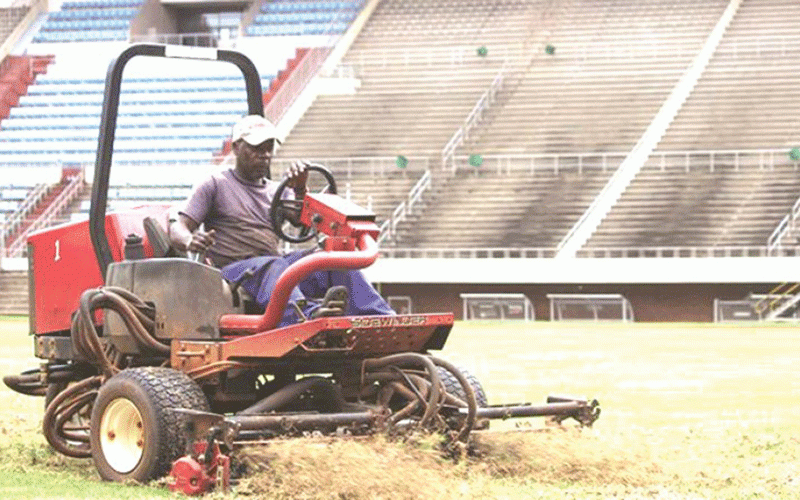
GROUNDS FOR CONCERN was the headline of an article that appeared in the September 1998 issue of the influential London-based African Soccer magazine.
This followed a stadium inspection by the Confederation of African Football (Caf) that raised concerns about the state of Zimbabwe’s stadiums earmarked to host the 2000 Africa Cup of Nations finals.
At that time, Zimbabwe had picked Rufaro, the National Sports Stadium, Barbourfields, Ascot, Torwood, Mucheke, and Sakubva Stadiums as possible hosts of the then 16-team continental showpiece.
Caf had made it clear that they wanted four stadiums spread over the whole country to host this continental showpiece and Rufaro had been targeted in Harare to host some of the group stage matches with the National Sports Stadium billed to host the grand final.
Leo Mugabe, who was a Caf executive committee member was the chairman of Zifa, but sadly could not do anything after his Caf colleagues decided to put Morocco on standby to take over the tournament in case Zimbabwe failed to meet the stadia upgrade requirements in time.
Coincidentally, it was also the same year and period that Zimbabwe’s Dynamos was making the whole world sit up and take notice with impressive performances in the Caf Champions League.
The Zimbabwean champions went on to controversially lose the Champions League final 4-2 to Asec Mimosas of the Ivory Coast and using the National Sports Stadium as their home ground.
Now the same stadium has deteriorated to the extent that it is no longer good enough to host such matches as the Caf Champions League and the Caf Confederation Cup, and worse still a youth international match.
- Inside Sport: Local stadiums in urgent need of attention
- Bullets ease relegation fears
- FC Platinum move six points clear
- Clinical Herentals leapfrog Ngezi to sixth
Keep Reading
A few months after the Dynamos Champions League spectacle — and as previously warned — Zimbabwe lost its rights to host those 2000 nations Cup finals which were then given to Ghana and Nigeria to share.
The reason for the withdrawal of the tournament was that most of the stadiums earmarked for the football showpiece had failed the test and had proved not good enough to host the competition.
This was the first time in Nations Cup history that the tournament was shared by two neighbours and the trophy was later on won by Cameroon, then captained by Rigobert Song after overcoming Nigeria on penalties in the final.
It should also be placed on record that it was at this same 2000 Nations Cup finals that Zimbabwean referee Felix Tangawarima pulled out a red card to dismiss Nigerian playmaker Austin ‘Jay Jay’ Okocha for foul play.
That was 23 years ago and Tangawarima is now employed by Fifa in charge of referees in this southern African region, but the stadia problem of 23 years ago is still there and has come back to haunt Zimbabwe again.
That is because the bulldozers, the tractors, the cement, the picks, the shovels, and the workers who were busy on the various stadia renovations were withdrawn immediately after Caf announced Zimbabwe was no longer hosting the 2000 Nations Cup finals.
This meant that the recommendations made by Caf to renovate the stadiums were abandoned and not followed, and these are the same renovations that make up the problem that Zimbabwe is facing again today.
Had Zimbabwe not only looked at the 2000 Nations Cup finals but the future, we could not be in the problematic position we are today?
As each day passes, there are concerns with the pace of renovations of Rufaro and the National Sports Stadium and there are also growing fears that the Warriors could end up playing their home matches in Zambia or South Africa.
The truth is that Rufaro Stadium will not be ready before the start of the Chan qualifiers in September and the hope now rests with the National Sports Stadium.
The Sports minister has made the nation believe that the stadium will be ready in time contending that renovations needed are not as big as earlier thought.
The issue here, however, is that we should not talk about what has not yet been done because time is running out and games are drawing nearer by each passing day.
Why is it taking the cash-laden Zimbabwean government that long to renovate the National Sports Stadium when an individual took less time to renovate Bata Stadium ?
Observers are of the opinion that renovations to these stadiums should have been done long back and Zimbabwe should now be busy building state-of-the art or new model stadiums as is happening in other countries, Zambia, for example.
They are of the opinion that only next year, both Rufaro and the National Sports Stadium would have been overtaken by time and more renovations would be needed, which would cost more money.
Surely, Zimbabwe should move with the times and build new stadiums rather than rely on stadiums, which have outlived their usefulness.
Stadiums like the National Sports Stadiums should now be for church and musical gatherings as well as for national state events or Castle Lager Premier Soccer League football rather than for international soccer.
Those old age stadiums should now only be used for football as a temporary stop gap measure while new and up-to-date facilities are being constructed.
- For your views, comments and suggestions [email protected] or WhatsApp on 0773 266 779.







